Abstract
The cellular character of the adipose tissue of 21 nonobese and 78 obese patients has been examined. Adipose cell size (lipid per cell) was determined in three different subcutaneous and deep fat depots in each patient and the total number of adipose cells in the body estimated by division of total body fat by various combinations of the adipose cell sizes at six different sites. Cell number has also been estimated on the basis of various assumed distribution of total fat between the subcutaneous and deep fat depots.
Obese patients, as a group, have larger adipose cells than do nonobese patients; cell size, however, varies considerably among the fat depots of individuals of either group. The variation in cell size exists not only between, but also within subcutaneous and deep sites. Estimates of total adipose cell number for a given individual based upon cell size can, therefore, vary by as much as 85%. On the basis of these studies it is suggested that the total adipose number of an individual is best and most practically estimated, at this time, by division of total body fat by the mean of the adipose cell sizes of at least three subcutaneous sites.
Irrespective of the method by which total adipose cell number is estimated, two patterns of obesity emerge with respect to the cellular character of the adipose tissue mass of these patients: hyperplastic, with increased adipose cell number and normal or increased size, and hypertrophic, with increased cell size alone. These two cellular patterns of obesity are independent of a variety of assumed distributions of fat among the subcutaneous and deep depots. When these different cellular patterns are examined in terms of various aspects of body size, body composition, and the degree, duration, and age of onset of obesity, only the latter uniquely distinguishes the hyperplastic from the hypertrophic: hyperplastic obesity is characterized by an early age of onset, hypertrophic, by a late age of onset. These studies indicate that there are two distinct periods early in life during which hypercellularity of the adipose tissue are most likely to occur: very early within the first few years, and again from age 9 to 13 yr.
Full text
PDF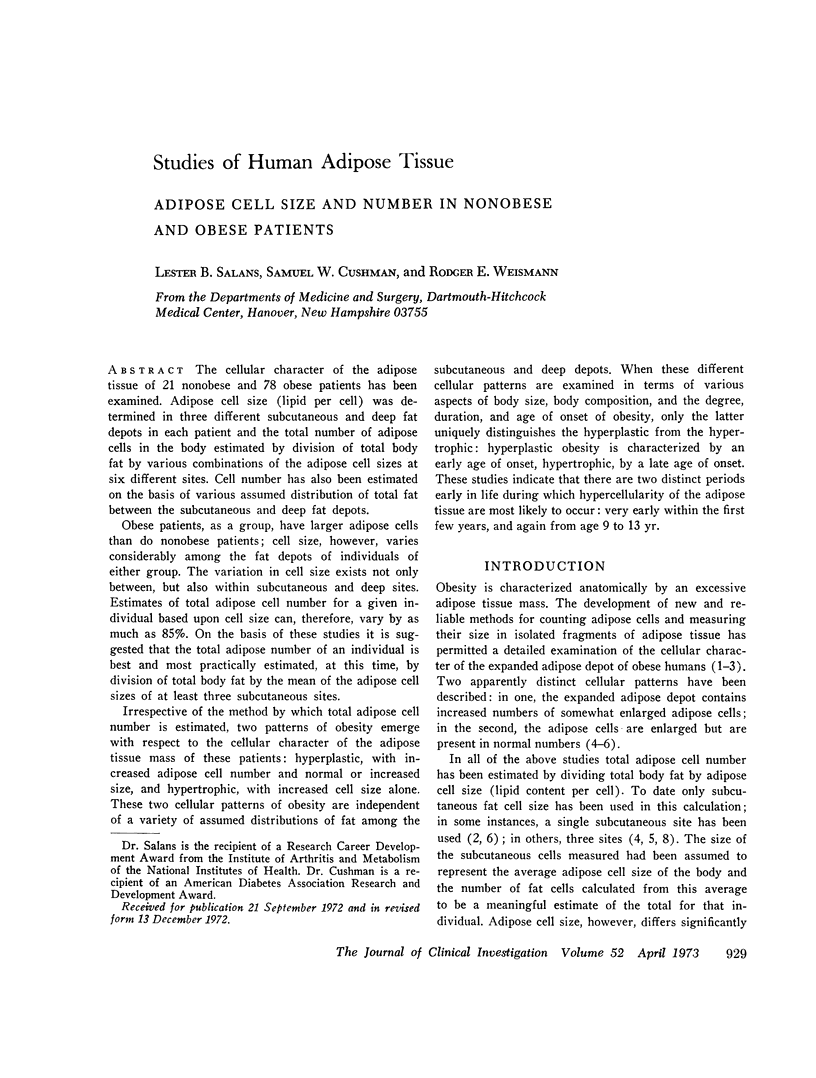
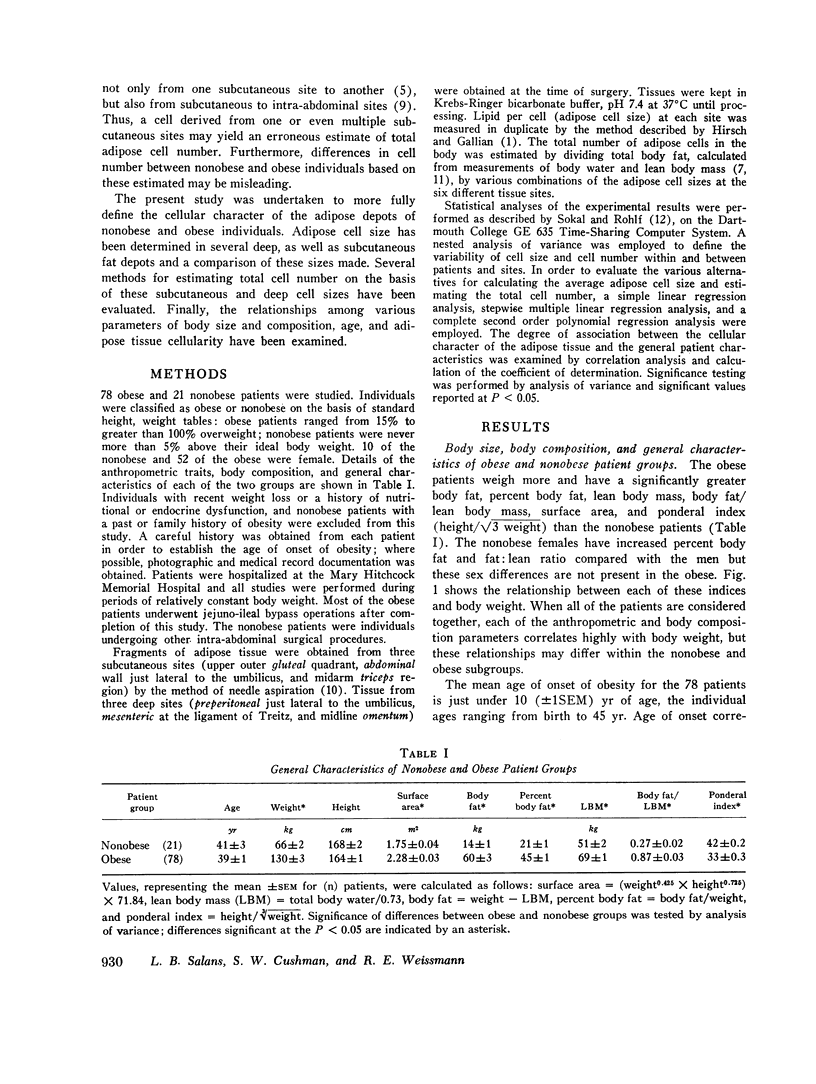

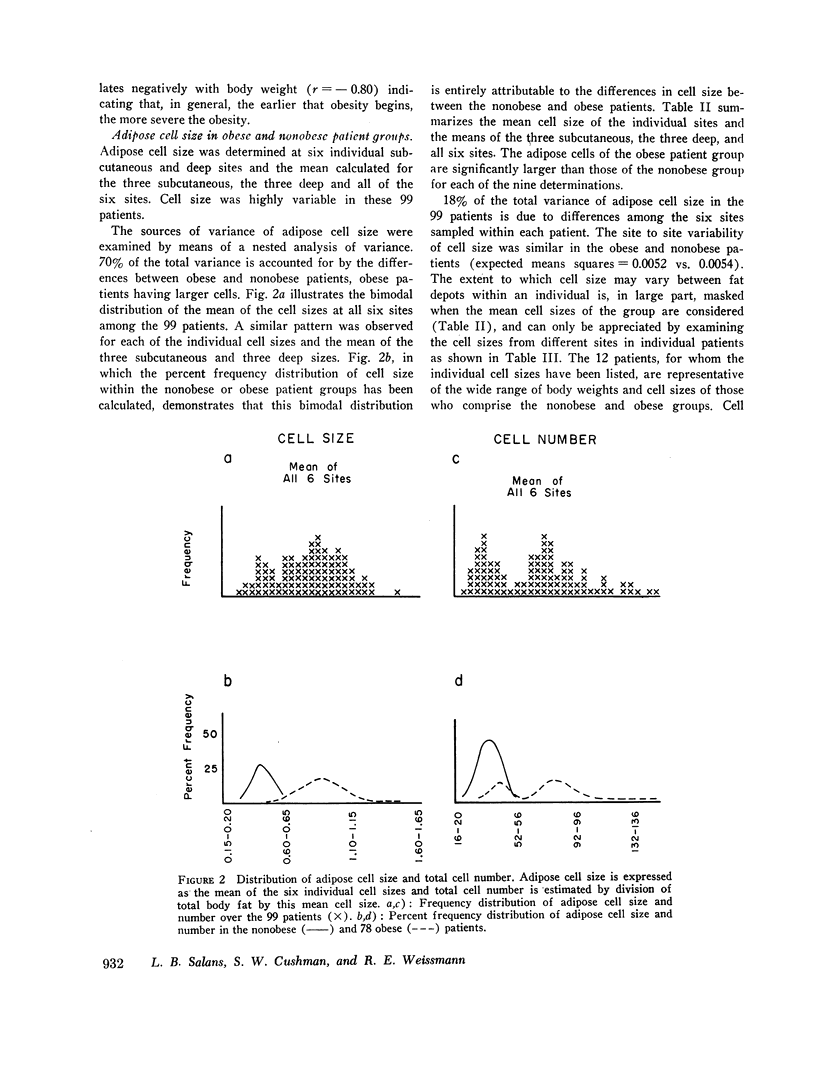

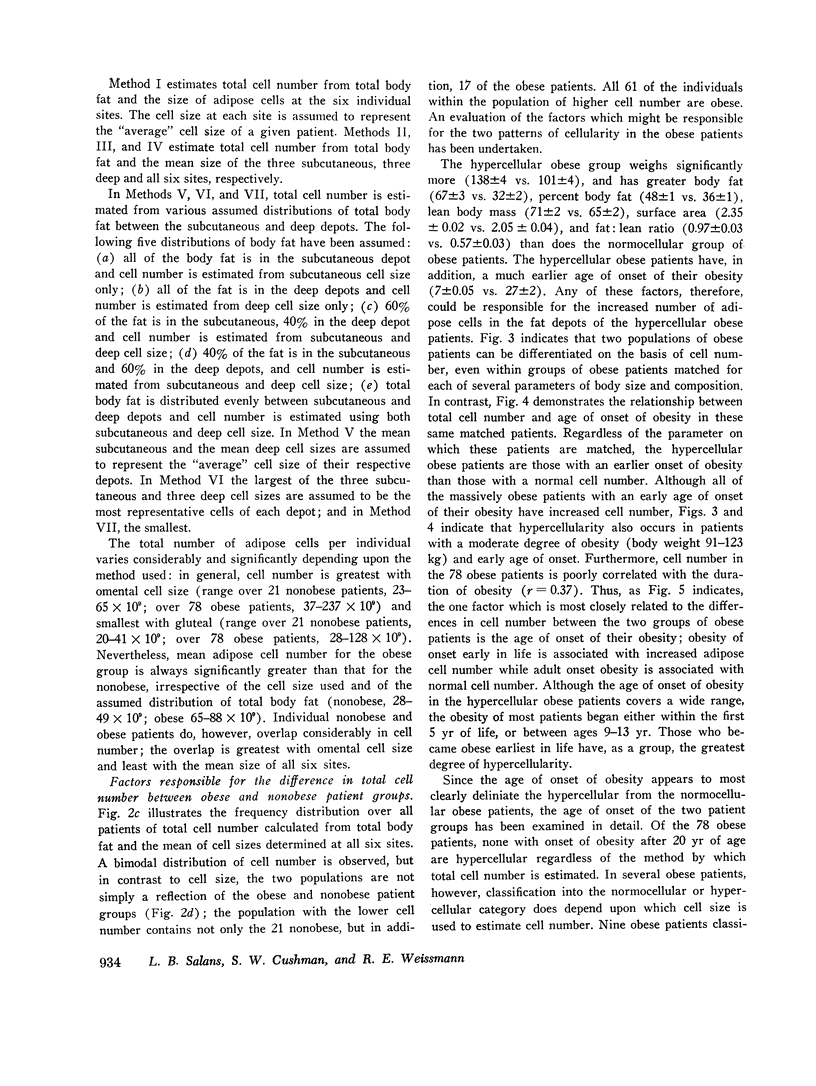
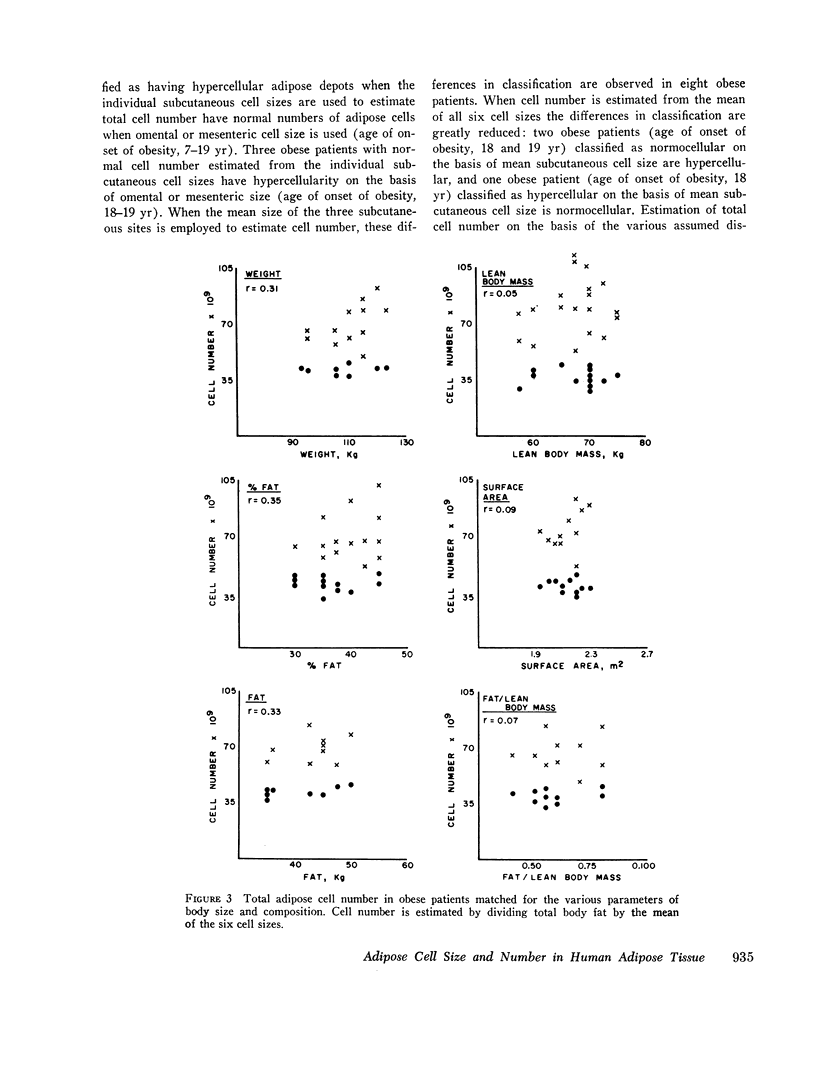
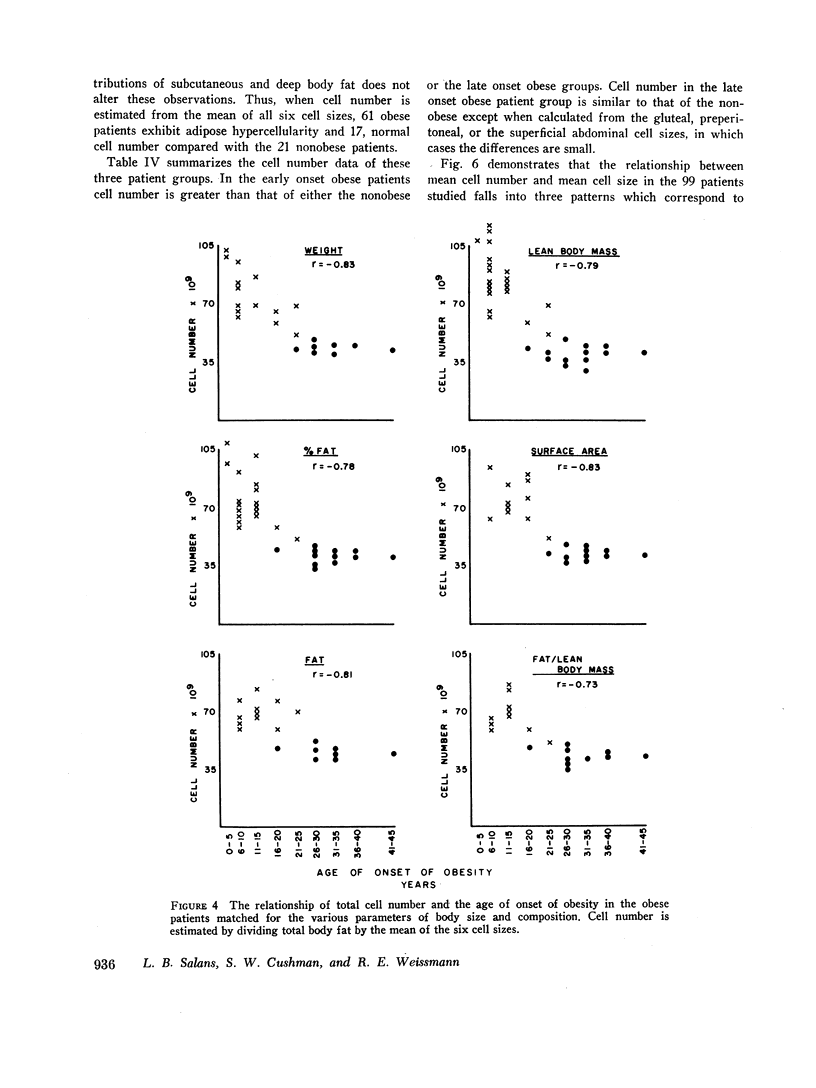
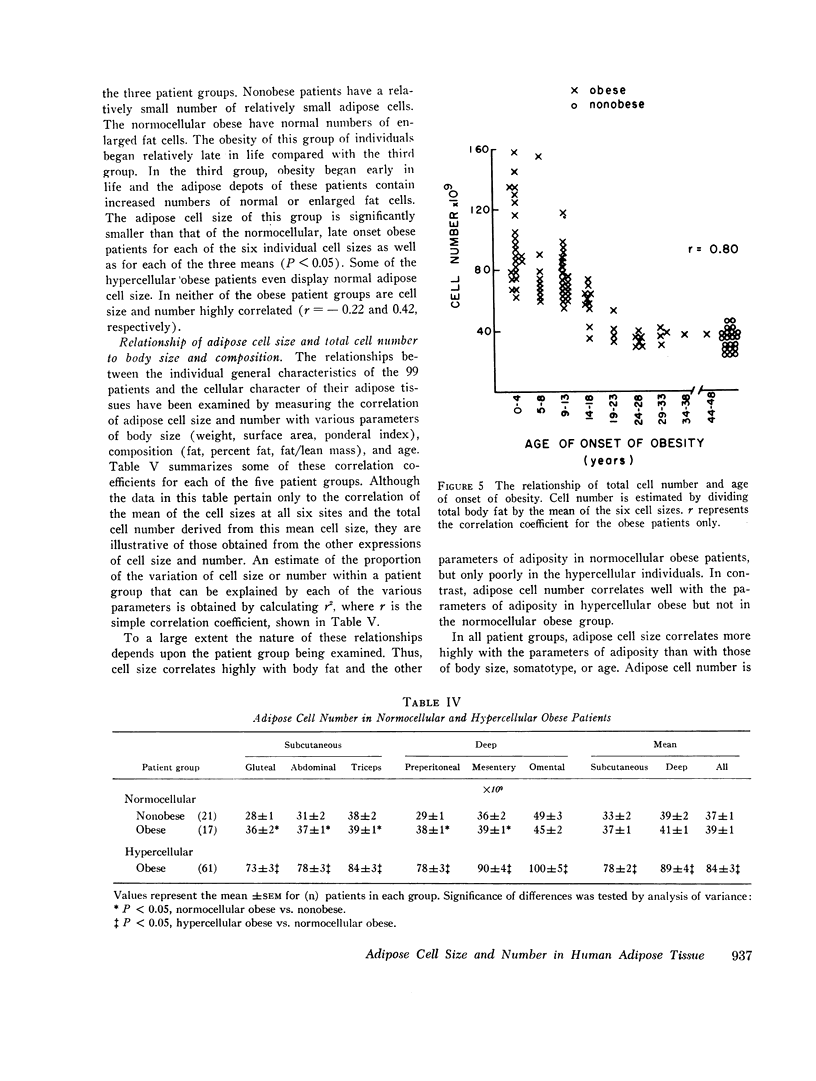

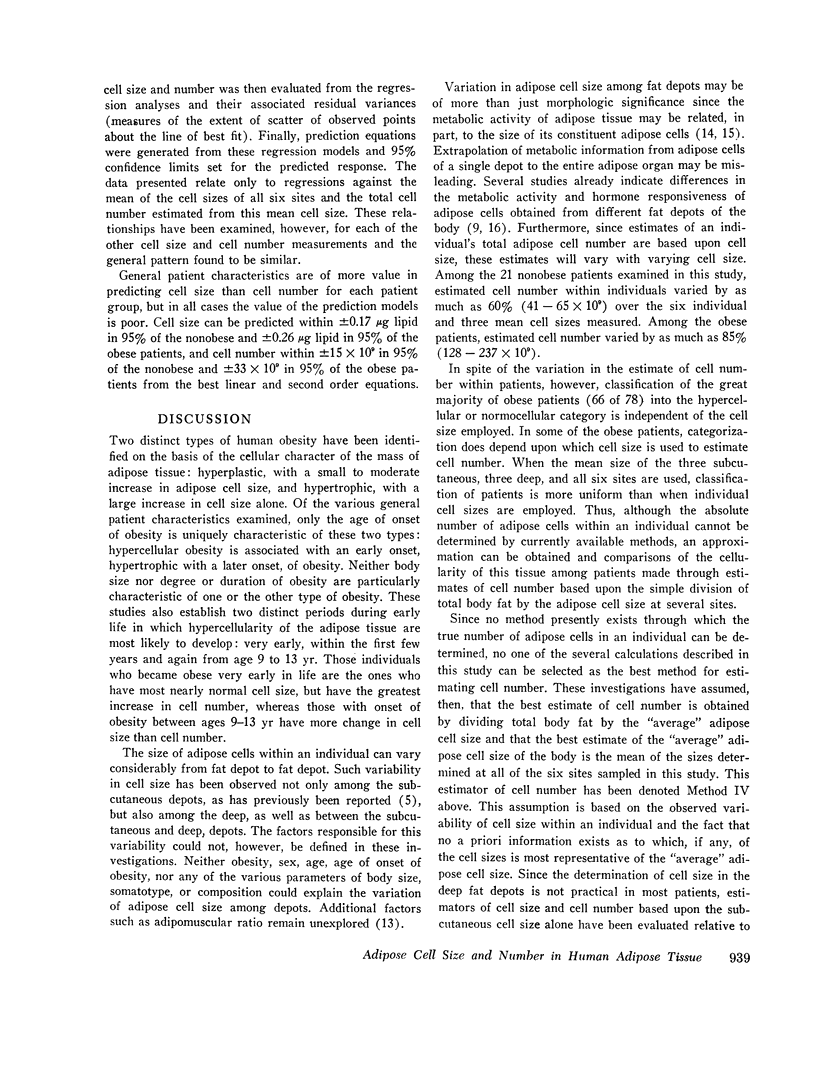


Selected References
These references are in PubMed. This may not be the complete list of references from this article.
- Björntorp P., Hood B., Martinsson A., Persson B. The composition of human subcutaneous adipose tissue in obesity. Acta Med Scand. 1966 Jul;180(1):117–121. doi: 10.1111/j.0954-6820.1966.tb02815.x. [DOI] [PubMed] [Google Scholar]
- Björntorp P. Sjöström L,+SJOSTROM L: Number and size of adipose tissue fat cells in relation to metabolism in human obesity. Metabolism. 1971 Jul;20(7):703–713. doi: 10.1016/0026-0495(71)90084-9. [DOI] [PubMed] [Google Scholar]
- Bray G. A. Measurement of subcutaneous fat cells from obese patients. Ann Intern Med. 1970 Oct;73(4):565–569. doi: 10.7326/0003-4819-73-4-565. [DOI] [PubMed] [Google Scholar]
- Bray G., Schwartz M., Rozin R., Lister J. Relationships between oxygen consumption and body composition of obese patients. Metabolism. 1970 Jun;19(6):418–429. doi: 10.1016/0026-0495(70)90093-4. [DOI] [PubMed] [Google Scholar]
- Brook C. G., Lloyd J. K., Wolf O. H. Relation between age of onset of obesity and size and number of adipose cells. Br Med J. 1972 Apr 1;2(5804):25–27. doi: 10.1136/bmj.2.5804.25. [DOI] [PMC free article] [PubMed] [Google Scholar]
- Goldrick R. B., McLoughlin G. M. Lipolysis and lipogenesis from glucose in human fat cells of different sizes. Effects of insulin, epinephrine, and theophylline. J Clin Invest. 1970 Jun;49(6):1213–1223. doi: 10.1172/JCI106335. [DOI] [PMC free article] [PubMed] [Google Scholar]
- HAMOSH M., HAMOSH P., BAR-MAOR J. A., COHEN H. FATTY-ACID METABOLISM BY HUMAN ADIPOSE TISSUES. J Clin Invest. 1963 Oct;42:1648–1652. doi: 10.1172/JCI104850. [DOI] [PMC free article] [PubMed] [Google Scholar]
- HIRSCH J., FARQUHAR J. W., AHRENS E. H., Jr, PETERSON M. L., STOFFEL W. Studies of adipose tissue in man. A microtechnic for sampling and analysis. Am J Clin Nutr. 1960 Jul-Aug;8:499–511. doi: 10.1093/ajcn/8.4.499. [DOI] [PubMed] [Google Scholar]
- Hirsch J., Gallian E. Methods for the determination of adipose cell size in man and animals. J Lipid Res. 1968 Jan;9(1):110–119. [PubMed] [Google Scholar]
- Hirsch J., Knittle J. L. Cellularity of obese and nonobese human adipose tissue. Fed Proc. 1970 Jul-Aug;29(4):1516–1521. [PubMed] [Google Scholar]
- Knittle J. L., Ginsberg-Fellner F. Effect of weight reduction on in vitro adipose tissue lipolysis and cellularity in obese adolescents and adults. Diabetes. 1972 Jun;21(6):754–761. doi: 10.2337/diab.21.6.754. [DOI] [PubMed] [Google Scholar]
- LESSER G. T., KUMAR I., STEELE J. M. CHANGES IN BODY COMPOSITION WITH AGE. Ann N Y Acad Sci. 1963 Sep 26;110:578–588. doi: 10.1111/j.1749-6632.1963.tb15781.x. [DOI] [PubMed] [Google Scholar]
- Salans L. B., Horton E. S., Sims E. A. Experimental obesity in man: cellular character of the adipose tissue. J Clin Invest. 1971 May;50(5):1005–1011. doi: 10.1172/JCI106570. [DOI] [PMC free article] [PubMed] [Google Scholar]
- Salans L. B., Knittle J. L., Hirsch J. The role of adipose cell size and adipose tissue insulin sensitivity in the carbohydrate intolerance of human obesity. J Clin Invest. 1968 Jan;47(1):153–165. doi: 10.1172/JCI105705. [DOI] [PMC free article] [PubMed] [Google Scholar]
- Sjöström L., Björntorp P., Vrána J. Microscopic fat cell size measurements on frozen-cut adipose tissue in comparison with automatic determinations of osmium-fixed fat cells. J Lipid Res. 1971 Sep;12(5):521–530. [PubMed] [Google Scholar]


